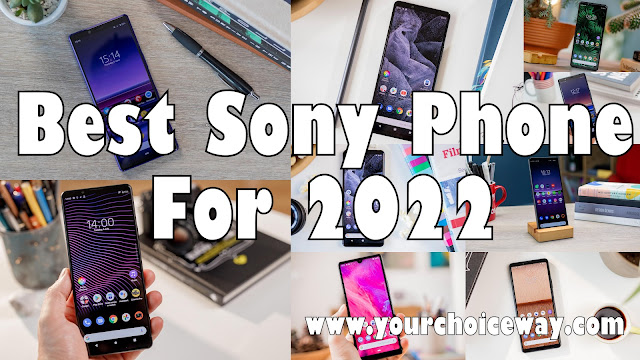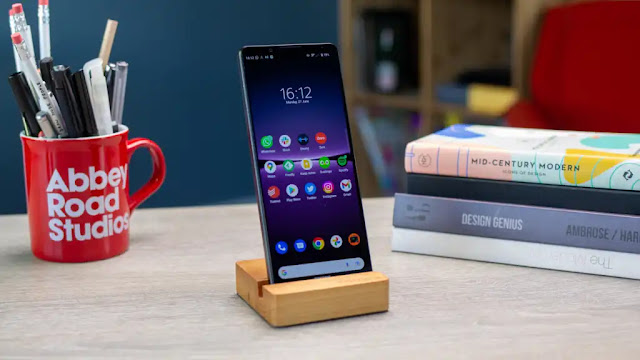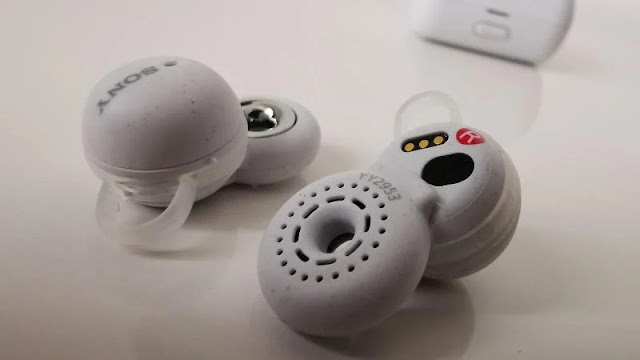With a £100 price increase over its predecessor, the Xperia 5 II undoubtedly steps into flagship territory. How does it fare?
Should I Buy The Sony Xperia 5 II?
Pros
- Beautiful 120Hz display
- Stellar performance
- Great battery life
Cons
- Hit-and-miss cameras
- Frustrating bloatware
- No wireless charging
Our Verdict
Price When Reviewed
- $949
After almost three years of steady decline, Sony’s smartphone sales have finally begun to stabilise. In the three months to the end of September 2020, the company shipped around 600,000 Xperia phones, roughly on par with Q3 2019.
Nonetheless, this still accounts for a tiny fraction of the global smartphone market. It would seem a curious failure for the company behind one of the most in-demand consoles in history, a brand which is recognised globally for its TVs and audio equipment.
For its 2020 phones, Sony has taken inspiration from another of its key revenue streams – mirrorless cameras. As such, the successor to last year’s Xperia 5 is known as the Xperia 5 II (or mark 2). It looks like a big upgrade on paper, but how does that translate to real-world usage? Here’s our full review.
Design And Screen
The design of the Xperia 5 II is unlike any phone I’ve tried this year, which is impressive going. It’s something of a fusion of old and new: legacy features such as the 3.5mm headphone jack and notch-less display combine with a gorgeous screen and premium build quality. It works as a complete package in my opinion, and is very satisfying to hold.
The phone feels a lot more compact than the 6.1in display might suggest, due in part to the tall and narrow 21:9 aspect ratio. That’s something we also saw on last year’s Xperia 5, but it’s still relatively unusual and so feels like a standout feature. The same things still apply here – it's almost impossible to reach the top of the phone one-handed, but many films look stunning without letterboxing.
The screen itself is Full HD (1080x2520) AMOLED panel, the most noticeable downgrade when compared to the flagship Xperia 1 II’s 4K display. However, you do get a key feature that’s not available on the more expensive phone – a 120Hz refresh rate. I’m fully aware that this isn’t a priority for most people, but I’d argue the same could be said for 4K on a screen this size. Faced with a choice between the two, I’d go for the 120Hz every time.
It’s hard to explain what benefit this provides if you’re used to 60Hz screens, but everything feels that bit slicker and smoother. Casual users might notice this most on endless scrolling social media apps like Twitter, but the key performance boost will be seen in gaming. You might notice a slight hit to battery life, but I think it’s more than worth it.
The glass back of the phone is predictably a fingerprint magnet, although the smudges are less noticeable on the black model I tested. It’s also surprisingly durable – both the front and back are equipped with Gorilla Glass 6, and it makes a big difference to how robust the phone feels.
It is relatively slippery though, and often worried about it sliding off a table or out of a pocket. The protruding camera module also made it nearly impossible to use the device while face-up on a flat surface, so I’d recommend throwing on a case. That vertical module houses three lenses: 12Mp wide, 12Mp ultra-wide, 12Mp telephoto – an identical setup to the Xperia 1 II. On the front, you also get the same 8Mp selfie camera. We’ll explore how they perform in detail later.
Sticking with slim bezels means Sony has found room to squeeze in a pair of front-facing speakers, and they make a big difference to the audio experience on the Xperia 5 II. The company has also overcome earlier patent issues to build the side-mounted fingerprint scanner into the power button. It’s pretty quick and generally reliable, but more sensitive to moisture than rear-mounted equivalents. My experience with in-display scanners has been underwhelming thus far, so I’m glad Sony stuck with a physical one.
Another nice touch is the SIM card tray, which has a little lever for releasing it without an ejection tool. There’s USB-C, as you’d expect, as well as two further physical buttons on the right side of the device. One launches Google Assistant and the other acts as a shutter button for the camera, although neither are re-mappable.
Hardware And Performance
The Xperia 5 II is powered by a top-of-the-line Snapdragon 865 processor, which combines with an Adreno 650 GPU and 8GB of RAM.
Qualcomm’s flagship processors are by no means reserved for only the most expensive phones anymore, but it's still good to see it here. Performance is predictably excellent, breezing through web browsing, social media and multitasking without issue.
Sony’s confidence in the Xperia 5 II’s performance is illustrated by the inclusion of Call of Duty: Mobile out of the box, known to be one of the most graphically demanding games on the Play Store. This is where the 120Hz refresh rate, offering ultra-smooth gameplay and no lag.
That’s illustrated in the below benchmarks. It’s worth noting that some phones max out at 60fps on some of the GFXBench tests, so the Xperia 5 II’s performance gain over its predecessor isn’t as huge as the results suggest:
Audio quality is perhaps overlooked on modern smartphones, due in part to the popularity of wireless headphones. Nonetheless, sticking with bezels means the Xperia 5 II has room dual front-facing stereo speakers that perform extremely well. There’s a richness to the sound and impressive level of bass, both things you won’t find on many handsets in 2020.
The Xperia 5 II also adds 5G to its predecessor, but with the technology still in its infancy I wasn’t able to test out how well it works.
Software And Features
The Xperia 5 II comes running Android 10, although an update to Android 11 is in the works and expected soon. Sony typically keeps its Android skin pretty light, and that’s no different here – it's relatively close to the so-called ‘stock’ version you’ll find on Pixel phones.
That being said, there are various smaller software tweaks dotted around the user interface. Chief among these are the ‘Cinema Pro’ and ‘Photo Pro’ apps, which provides granular control over the way you capture photos and videos using the Xperia 5 II. The ‘Pro’ name is justified here: you can't just pick up these apps and start using without at least some expertise, hence why Sony has included them as standalone apps.
Unfortunately, these aren’t the only apps that can’t be uninstalled. The likes of Facebook, Netflix and Call of Duty: Mobile aren’t what you’d typically think of as bloatware, and they may be widely used by people who buy this phone. I just think Sony could have at least provided the option to remove them from the device. At least you don’t have to worry about it taking up too much of your storage, with the phone supporting microSD card storage expansion.
There are a number of smaller software tweaks dotted around the user interface. ‘Side sense’ is on the far-right side of the display which allows you to quickly launch certain apps or start multitasking. It’s similar to the Edge panel you’ll find on Samsung phones, although doesn’t make as much sense on the flat display here. There’s also an extreme battery saving mode known as ‘STAMINA’, while in display settings ‘Creator mode’ gives the display a more rich, cinematic quality.
Cameras
The cameras on the Xperia 5 II are largely unchanged from its predecessor. The triple rear setup is comprised of a 12Mp wide, 12Mp ultrawide and 12Mp telephoto. I’m glad Sony decided not to include further macro or depth sensors, which sound good on paper but rarely provide any tangible benefit.
The Photo Pro app allows you to customise image settings to your liking, just like you would on one of Sony mirrorless cameras. It’s something I’d recommend if you’re serious about taking photos using this phone, as the auto mode in the default camera app was extremely hit-and-miss.
Exposure was the main area it seemed to struggle with, often blowing out the background or losing detail in darker areas of the image. In wide-open spaces it performed better, tending to saturate stills slightly but offering excellent dynamic range.
Despite the lack of macro lens, close-up shots were very impressive, while it was also good and capturing detail on buildings. I did like that the main camera app uses AI to automatically detect which type of scene you’re in and adjust the image accordingly, saving you from cycling through menus to find the option you want. That includes night mode, which does a good job of brightening the shot but did lose some detail.
Shots from the 8Mp selfie camera are impressive overall, offering a good level of detail and accurate colours. Curiously, it tends to do a pretty good job with exposure.
Battery Life
The phone comes with a 4000mAh battery, identical to the Xperia 1 II and a big increase over the 3140mAh cell on last year’s Xperia 5.
That’s reflected in the benchmarks, as I recorded 12h15 and 15h05 in Geekbench 4 and PCMark’s battery tests respectively. From using the phone for an extended period, these feel pretty accurate - I was comfortably able to get a couple of days of moderate usage before reaching for the charger, even at 120Hz.
I did notice it struggle slightly for standby time though – I'd often come back to the phone after a couple of hours and notice that the battery had depleted by quite a few per cent.
The phone supports fast charging at 21W, but there was only an 18W adapter included in the box. This still got me 48% in 30 minutes from off, so you’re looking at little over an hour for a full charge.
One of the big compromises you’re making when compared to the Xperia 1 II is the lack of wireless charging. This wasn't a big deal for me, but I understand the prevalence of wireless chargers these days may make it a dealbreaker for some. We certainly shouldn’t be talking about this being a missing feature on an £800 phone, particularly when it’s available on phones a quarter of the cost.
Price And Value For Money
Talking of cost, the Sony Xperia 5 II will set you back £799/US$949. There’s only one configuration on offer, with 8GB of RAM and 128GB internal storage, and it’s rare to see the disparity between UK and US pricing.
It’s a £100 increase on what last year’s Xperia 5 cost at launch, leaving us in no doubt that this is a flagship through and through. To say competition at this price point is fierce would perhaps be understating it – the likes of the OnePlus 8T, Samsung Galaxy S20 and Oppo Find X2 are all compelling alternatives.
It’s not that the Xperia 5 II is bad value for money per se, just that the phones listed above offer more bang for your buck for the average consumer.
Verdict
In a world where so many smartphones look similar, I have to admire Sony’s desire to be different. Having a notch-less display and 3.5mm headphone jack is practically unheard of in 2020, but after using the Xperia 5 II I wish they were still on more phones.
There are plenty more highlights here, which make it a big upgrade over last year’s model. The stunning 21:9 OLED display is now 120Hz a feature you won’t find on even the more expensive Xperia 1 II. Performance is superb across the board, while the all-too-rare front-facing stereo speakers are a delight.
However, it’s not all good news. The cameras flatter to deceive unless you’re willing to play around in the Photo Pro app, while a surprising amount of bloatware taints an otherwise excellent software experience. There’s also no wireless charging, a major omission at this price point.
There’s definitely a market for the Xperia 5 II, but it’s unlikely to contribute to a sudden increase in Sony’s slice of the smartphone pie.
Specs
- 6.1in 1080x2520 21:9 ‘CinemaWide’ OLED display, 120Hz
- Qualcomm Snapdragon 865 processor
- 8GB RAM
- 128GB storage
- microSD expandable up to 1TB
- 12Mp f/1.7 24mm wide camera w/ OIS
- 12Mp f/2.4 70mm telephoto camera w/ 3x optical zoom + OIS
- 12Mp f/2.2 16mm ultrawide camera
- 8Mp f/2.0 front-facing camera
- Android 10
- Stereo speakers
- 3.5mm headphone jack
- Gorilla Glass 6
- IP65/68 certified
- 4000mAh battery
- 21W fast-charging
- Wireless charging
- 5G
- Bluetooth 5.1
- 163 grams
- 158×68×8mm





























0 comments:
Post a Comment